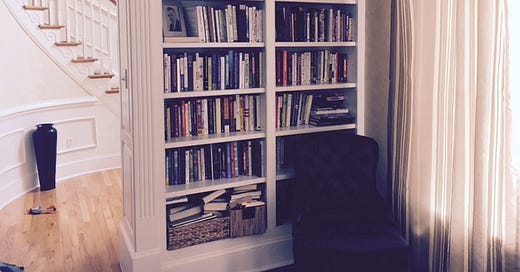My family and I moved to a new home almost exactly two years ago. Our new place is only about 2 miles from the old place, so in addition to hiring a moving truck, we were able to make a lot of small car trips with stuff.
In other words, we didn’t have a strict deadline for getting stuff out the door, and we didn’t have a strict limit in terms of truck space (as we would have for, say, a cross country move where we couldn’t just go back and forth on our own).
Still, as I kept loading more and more piles into my car, it reminded me of just how much a family can accumulate over a decade. Kid artwork. Old Christmas presents. Books. It adds up. A puzzle or game might have been sitting untouched for years but it wouldn’t be hurting anyone sitting there. So nothing happened to it — until it had to make the trip.
Marie Kondo says to keep an object only if it sparks joy. During the packing process, I came up with a different question for whether something was worth keeping. Would I move this?
If you’ve been hoping to lighten your house in the new year, this might be a reasonable question for you to ask too.
Less selective than sparking joy
When you live with six other people (as I do) I think the bar of “sparking joy” is a bit high. But “would I move it?” forces you to consider whether you actually assign value to something.
Many of us accumulate things that we don’t actually value. An American-sized suburban house often has a garage, an attic, maybe a basement storage room, and several closets. All of these places wind up being halfway homes for things that aren’t actually being used. No one particularly values them, but since getting rid of them takes time and effort, the cost to keep them tends to be lower than the cost to part with them.
But when you’re moving, that all changes. When we brought in potential moving companies to give estimates, they opened all those closet doors and measured everything in the basement storage room. When you use a professional moving company, there is really no such thing as secondary value. They packed up every mismatched dish with the same care they did my primary glassware. With those dollar signs staring at you, you start rethinking things. The unused stuff can no longer just sit there, and as the junk truck or the donation truck is generally cheaper than the professional moving company, the right move becomes more clear.
Now, to be sure, for me there was sort of a middle ground. I decided to stick some lamps and framed art in my car to drive these things over myself. I wanted to keep them but didn’t want to pay for white-gloved service to move these so-called “valuables” (they really weren’t valuable).
Pretend to move
In any case, I wound up getting rid of a lot of stuff once I saw that keeping it was going to cost me. I assume you probably aren’t moving any time soon. But you don’t have to be moving to try to adopt this mindset. Just put everything through the same rubric. Look at its size and weight. Would you be willing to pay, I don’t know, a dollar, five dollars, twenty dollars, maybe more, to move this particular item? if the answer is no, that’s a good sign you don’t really value it all that much. Put it in a donation box or trash box and then — here’s the real pro tip, schedule a pick-up from a junk service and a donation service (like Green Drop). With a deadline on your calendar, you’ll be far more motivated to get it out. Pretend the day the trucks are coming is the day you’re moving!
The truth is, you probably will move at some point in your life. So use any new year decluttering energy to make this future move easier on you. Too much stuff can cost us. We just don’t always see that as clearly as when the moving men show up with their boxes.




Heard you mention on the podcast that you might write about the SOP for your household, and I just wanted to chime in that I’d love to hear about that this year! I’m trying to give some more attention to those things in my own household this year, and would love to hear yours!